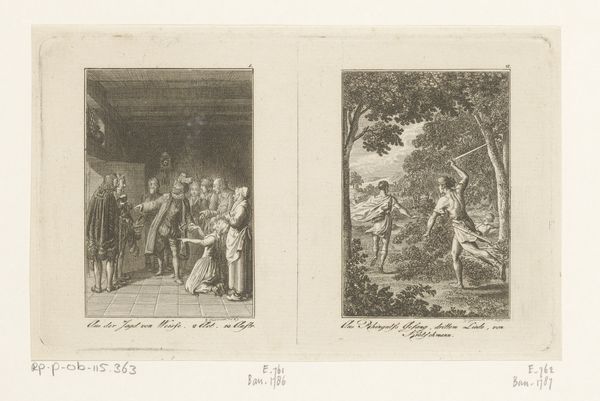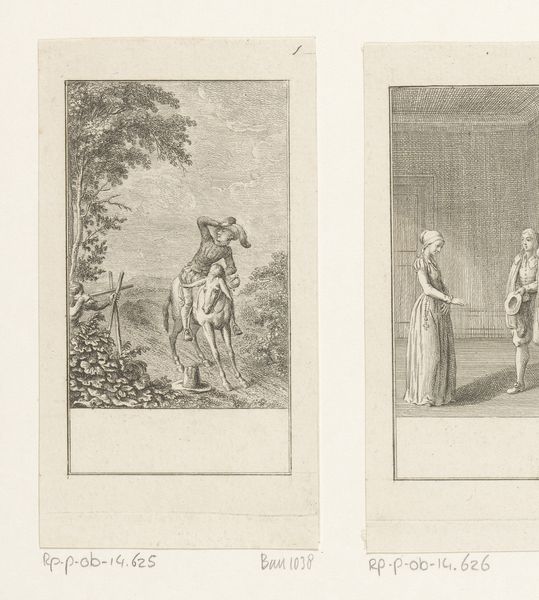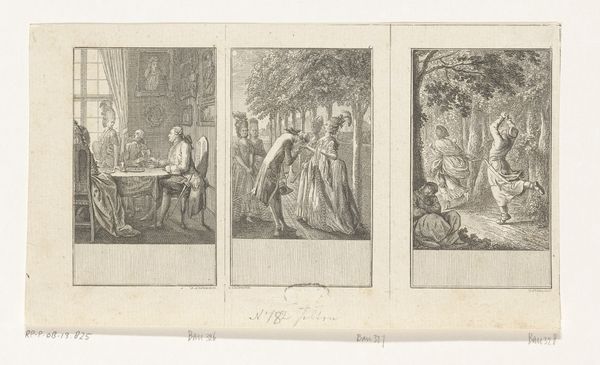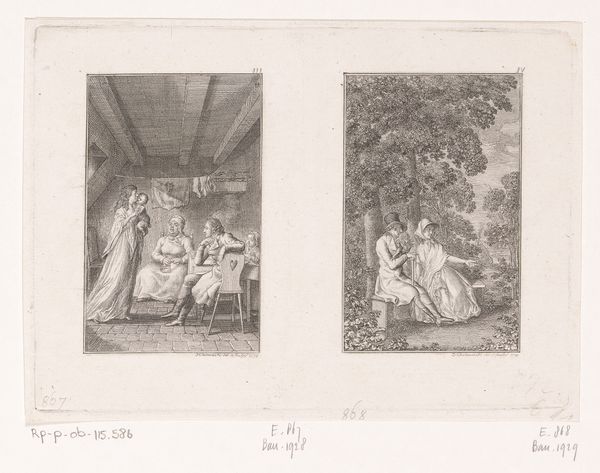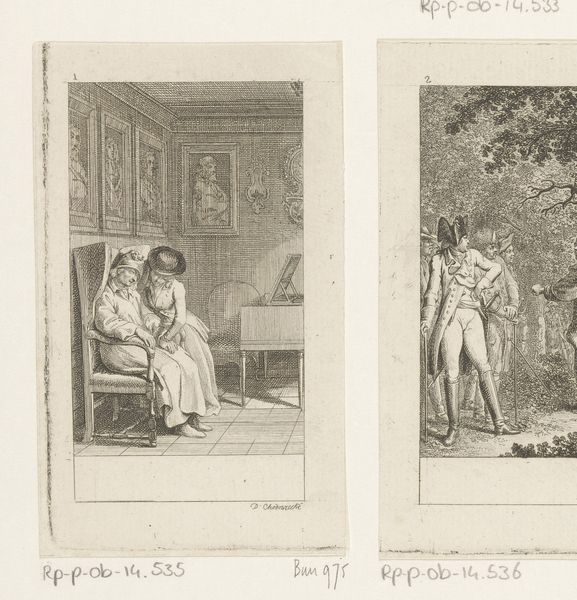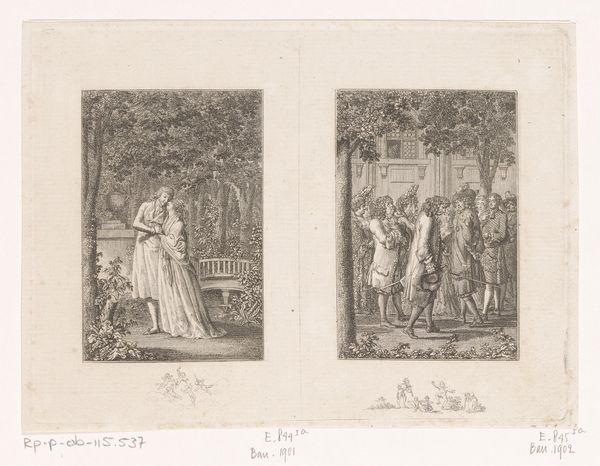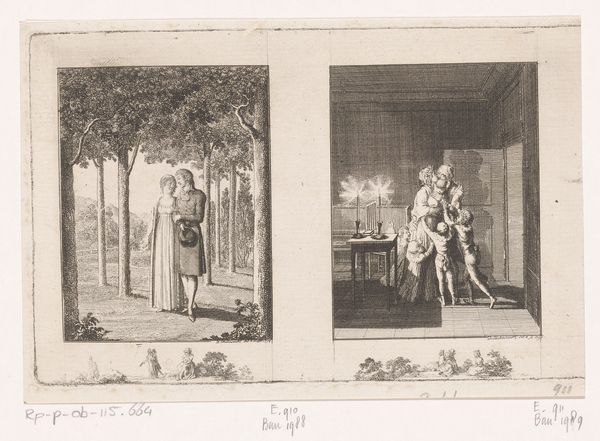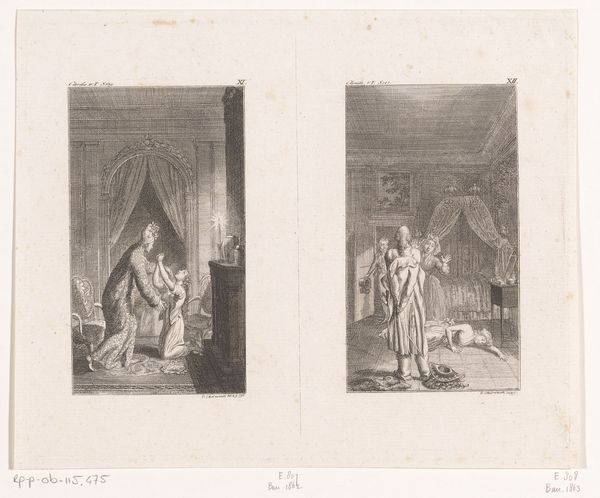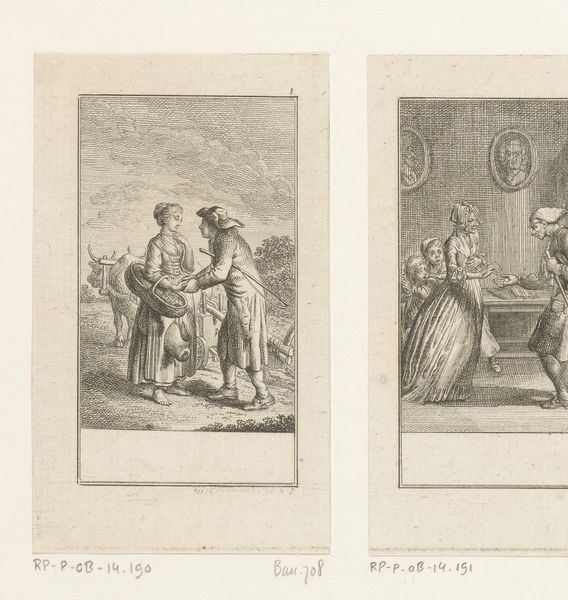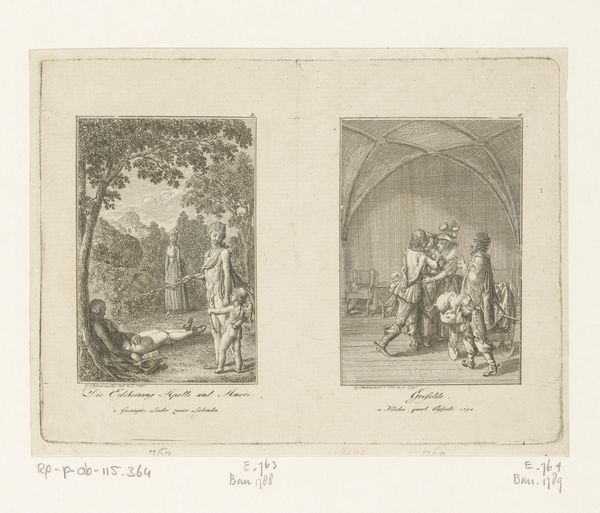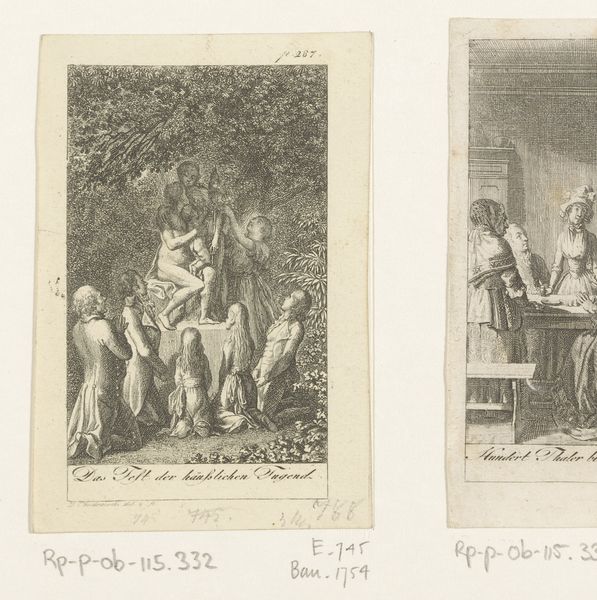
print, etching, engraving
#
portrait
#
narrative-art
# print
#
etching
#
landscape
#
figuration
#
romanticism
#
genre-painting
#
history-painting
#
engraving
Copyright: National Gallery of Art: CC0 1.0
Editor: Here we have Daniel Chodowiecki's "Clarissa," created in 1796. It looks like an engraving or etching. The two panels depict separate scenes; one looks like a tense confrontation outdoors, while the other shows a woman collapsing indoors. How do you interpret this work? Curator: This engraving invites us to consider the complex societal constraints placed upon women during the late 18th century, especially within narratives like Samuel Richardson’s "Clarissa," from which Chodowiecki drew inspiration. The two scenes offer contrasting perspectives, don't they? The outdoor scene, seemingly a negotiation or confrontation, juxtaposes the enclosed, domestic space of female collapse. Editor: Absolutely. The outdoor scene has two men seemingly in dispute, while the indoor scene feels claustrophobic. Does this contrast highlight the limited agency of women at the time? Curator: Precisely. Think of the visual language. The garden, although outdoors, still acts as a contained space for male interaction. The interior domestic sphere, meant to be safe, becomes a site of breakdown for Clarissa. Her agency is further curtailed. We must also look at the gaze: who is allowed to look, to act? Editor: It’s interesting how Chodowiecki uses the print medium itself. Was this format readily accessible to a broader audience and, if so, how might that have impacted its message? Curator: Prints like these were indeed more accessible, circulating narratives and social critiques beyond elite circles. It allowed for broader engagement with these issues. Think of it as an early form of social commentary accessible to the rising middle class. How does the reproducibility affect our understanding? Editor: That adds another layer to it! Knowing that this print could be disseminated widely, makes me think Chodowiecki intended to spark public conversation about women's roles. Curator: Precisely. He presents a visual dialogue concerning the social pressures women faced, and makes it accessible, spurring consideration of their position within the rigid social fabric of the era. Editor: I had not considered that element. Thank you. It's fascinating to explore the layers of meaning in what initially appeared to be a simple illustration. Curator: The beauty of art lies in its ability to reflect and critique the society that birthed it. Every line and composition decision echoes broader cultural conversations.
Comments
No comments
Be the first to comment and join the conversation on the ultimate creative platform.
